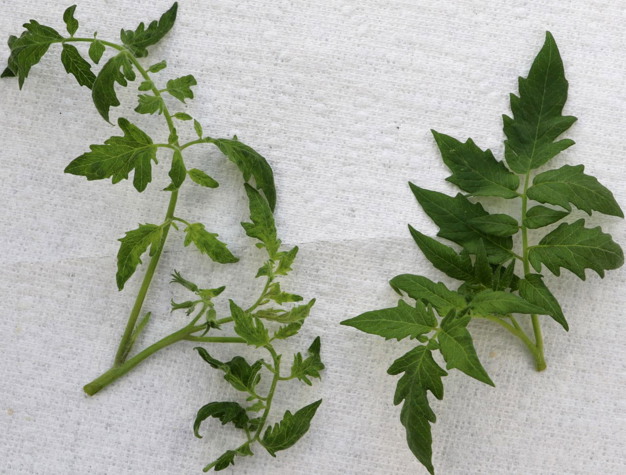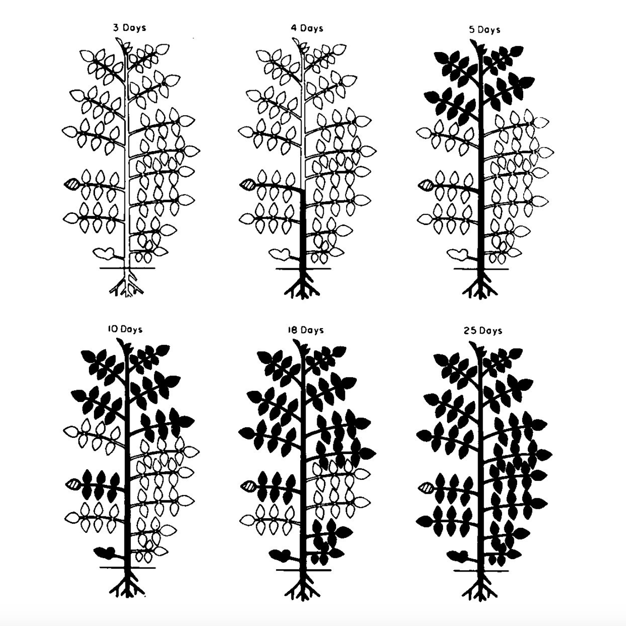"It is important to be prepared and to understand the virus infection in order to effectively mitigate its spread or prevent a potential epidemic," explains Harmen Hummelen, production quality manager at Bayer.
The tomato brown rough fruit virus (ToBRFV) is becoming increasingly widespread. In the event of infection, it is important to be prepared, understand the viral infection, and manage its spread.
A ToBRFV infection that is not properly managed can have a significant impact on plant quality and yield. Detecting the virus early after infection is essential, and this article presents some tips and suggestions for early detection.
Recognition in the greenhouse
Recognizing an early infection is not easy, partly because most people have never seen the disease before. There are some general guidelines to help with early detection and recognition of the ToBRFV virus, and an experienced person who can "read" plants is one of the most valuable helpers.
Such a person is more likely to detect any "anomaly" for a particular variety or time of year (for example, plants with a slightly different color or shape). These symptoms may not be directly linked to the ToBRFV virus, as they can often resemble fertilizer deficiency or other stress factors.
For example, one of the symptoms may be that the plant is a little shorter for no clear reason. These plants, or their neighbors, may have fruits that do not ripen normally. Some fruits, particularly at the top of a cluster, ripen later, or ripening is more uneven, perhaps with a few more spots. The top of the plant could also turn a little paler green. These are all symptoms that can be caused by many factors, but they can also indicate the presence of ToBRFV.
The problem is that, in some cases, the virus causes no symptoms on the plant and only manifests itself on the fruit. This seems to occur especially in older crops, where virtually no symptoms are observed, but the virus is present. This increases the risk of a missed infection spreading to the next crop cycle.
It is therefore very important to carry out another, more thorough check. The final step in determining whether ToBRFV is present is to carry out a test.
 Tomato brown rugose fruit virus | Cornell Vegetables: Tomato brown rugose fruit virus | Cornell Vegetables
Tomato brown rugose fruit virus | Cornell Vegetables: Tomato brown rugose fruit virus | Cornell Vegetables
"A simple and effective method of testing for the presence of ToBRFV is to take a sample from the calyx of the fruit," explains Leonie Hogendonk, De Ruiter development manager.
Test
A laboratory or rapid test may indicate the presence of infection. In both cases, care should be taken to collect several parts of the plant, such as the calyx and actively growing shoots, in a single sample, as the virus may not be present in all parts of the plant. If the first sample does not confirm the visual diagnosis, feel free to produce another sample from a second plant or combine several plants into a single sample.
Diagnosis of drainage water is also a good way of detecting infection at an early stage. Belgian growers have analyzed this water in the laboratory, and, in some cases, a viral infection can be detected up to 10 weeks before the appearance of visual symptoms.
Caution is key when testing early in the season after a previous infection, as it is possible that RNA from the previous season's dead virus may be detected. However, if the amount of virus increases, it is clear that it is a live virus developing in the plants.
Virus detection should be limited to a certain block or section of the greenhouse, and such early detection allows further action to be taken, thus reducing the spread of the virus within the greenhouse or nursery.
 Figure 1. The virus is not uniformly distributed throughout the plant. A virus penetrates somewhere in the plant and then moves with the phloem towards the roots. Almost at the same time, it also moves to the upper, young, and growing part of the plant, and it can take some time for the rest of the plant to become infected.
Figure 1. The virus is not uniformly distributed throughout the plant. A virus penetrates somewhere in the plant and then moves with the phloem towards the roots. Almost at the same time, it also moves to the upper, young, and growing part of the plant, and it can take some time for the rest of the plant to become infected.
Entry point of the virus in the greenhouse
When the first plants are detected, the next question is why the infection has occurred there. In practice, it is not always possible to answer this question. The virus is invisible, and even with good prevention and hygiene measures, low levels of the virus can be introduced at any given time. The location of the virus is not necessarily the entry point.
The virus can enter via people, equipment, or animals. It is not yet known how long it takes for the virus to infect the crop from the vector (what carries the virus), and this can range from 10 minutes to a day or more. This means that the virus can appear for the first time in the middle of the greenhouse, even if it has been introduced elsewhere. The virus also needs a plant that is sufficiently sensitive to allow infection.
All these unknown factors make it difficult to trace the initial point of entry. It is therefore important to maintain high levels of hygiene in greenhouses and crops from the outset and throughout the growing season.
Set-back from infection date
In some experiments, virus symptoms appear in young plants after only 10 days. However, in older plants, no clear symptoms may be observed for months, sometimes even until the end of cultivation. Finding that first plant is a major challenge. It is very likely that the first infected plant is one of the neighboring plants and, by the time the symptoms are discovered, the infection may involve 10 to 20 plants in total.
Good screening to find the virus as early as possible and good hygiene to reduce the spread of the virus is essential to keep as many plants healthy as possible until the end of the growing cycle.
For more information: vegetables.bayer.com/fr
